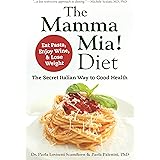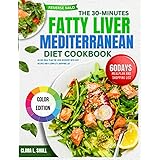The pursuit of effective and sustainable weight management is a common objective, with numerous approaches available. As highlighted in the accompanying video featuring celebrity nutritionist Ryan Fernando, several pragmatic and cost-effective fat loss diet tips can be integrated into daily routines to promote metabolic health and encourage caloric expenditure.
These strategies are designed to optimize the body’s natural fat-burning mechanisms, ensuring that dietary changes are both impactful and accessible. Adherence to structured eating patterns and mindful activity is paramount for achieving desired outcomes in fat loss and overall well-being.
Strategic Meal Timing: Optimizing Fasted States
One of the primary recommendations involves a strategic adjustment to breakfast timing. Delaying the initial meal by approximately two hours can significantly enhance metabolic flexibility, leading to more pronounced fat burning.
This practice is essentially a form of time-restricted eating, a type of intermittent fasting, where the eating window is condensed. During this extended fasting period, the body is compelled to utilize stored fat for energy, especially when combined with physical activity.
The Benefits of Fasted Exercise and Hydration
Incorporating exercise within this two-hour fasting window is highly advantageous. When physical activity is undertaken in a fasted state, particularly after an overnight fast, hepatic glycogen stores are often depleted, prompting a greater reliance on fat oxidation for fuel.
Consuming only water or green tea during this pre-breakfast period further supports this metabolic shift. Green tea, rich in catechins such as epigallocatechin gallate (EGCG), has been demonstrated to possess thermogenic properties, subtly increasing metabolic rate and contributing to enhanced fat metabolism without introducing caloric intake.
Macronutrient Rebalancing for Enhanced Satiety and Nutrient Density
A crucial aspect of effective dietary management involves meticulous attention to macronutrient ratios, particularly at lunch. A recommendation is made to double the intake of vegetables and pulses (daal), concurrently reducing the consumption of refined grains such as rice and roti by half.
This deliberate adjustment fundamentally alters the nutritional profile of the meal, prioritizing fiber and protein while minimizing the glycemic load. Consequently, sustained satiety is achieved, and overall caloric intake is more readily managed.
The Role of Fiber and Protein in Weight Management
The increased inclusion of vegetables introduces a significant volume of dietary fiber. Fiber is integral for digestive health and contributes substantially to feelings of fullness, thereby mitigating overeating.
Furthermore, pulses are an excellent source of plant-based protein, which requires more energy for digestion (the thermic effect of food) and is crucial for muscle repair and synthesis. This protein-rich, high-fiber approach supports a sustained energy release and helps in maintaining a caloric deficit, vital for effective fat loss.
Circadian Rhythm and Early Dinner Strategies
The practice of concluding dinner before sunset aligns with principles of circadian rhythm eating. The human body’s metabolic processes are intrinsically linked to the natural light-dark cycle, with digestive efficiency typically diminishing in the evening hours.
Consuming meals late in the evening can disrupt these natural rhythms, potentially leading to impaired glucose metabolism and increased fat storage. An earlier dinner allows for complete digestion prior to sleep, optimizing sleep quality and metabolic health.
Post-Dinner Rituals for Enhanced Digestion and Relaxation
Following an early dinner, the recommendation to consume only warm chamomile or peppermint tea offers additional digestive and calming benefits. Chamomile is recognized for its soothing properties, aiding in relaxation and potentially improving sleep onset, which is crucial for metabolic regulation.
Peppermint tea, conversely, is often utilized to alleviate digestive discomfort and promote smoother gastrointestinal function. Both options provide a non-caloric, beneficial end to the eating window, reinforcing disciplined dietary practices for sustainable fat loss.
Post-Meal Activity: Boosting Caloric Expenditure
The bonus tip emphasizes the importance of post-meal activity, specifically a 15-minute walk and talk. This seemingly minor intervention has significant implications for metabolic health and caloric expenditure.
Such activity contributes to Non-Exercise Activity Thermogenesis (NEAT), which is the energy expended for everything we do that is not sleeping, eating, or sports-like exercise. This consistent, low-intensity movement throughout the day can significantly contribute to overall caloric deficit.
Managing Postprandial Glucose and Digestion
Engaging in light physical activity immediately after a meal, such as a 15-minute walk, assists in managing postprandial glucose levels. This helps in minimizing sharp insulin spikes, which can be conducive to fat storage.
Moreover, walking aids in the digestive process, facilitating the movement of food through the gastrointestinal tract and reducing feelings of sluggishness. These simple yet effective fat loss diet tips, when consistently applied, form a powerful foundation for a healthier lifestyle and sustainable weight management.











